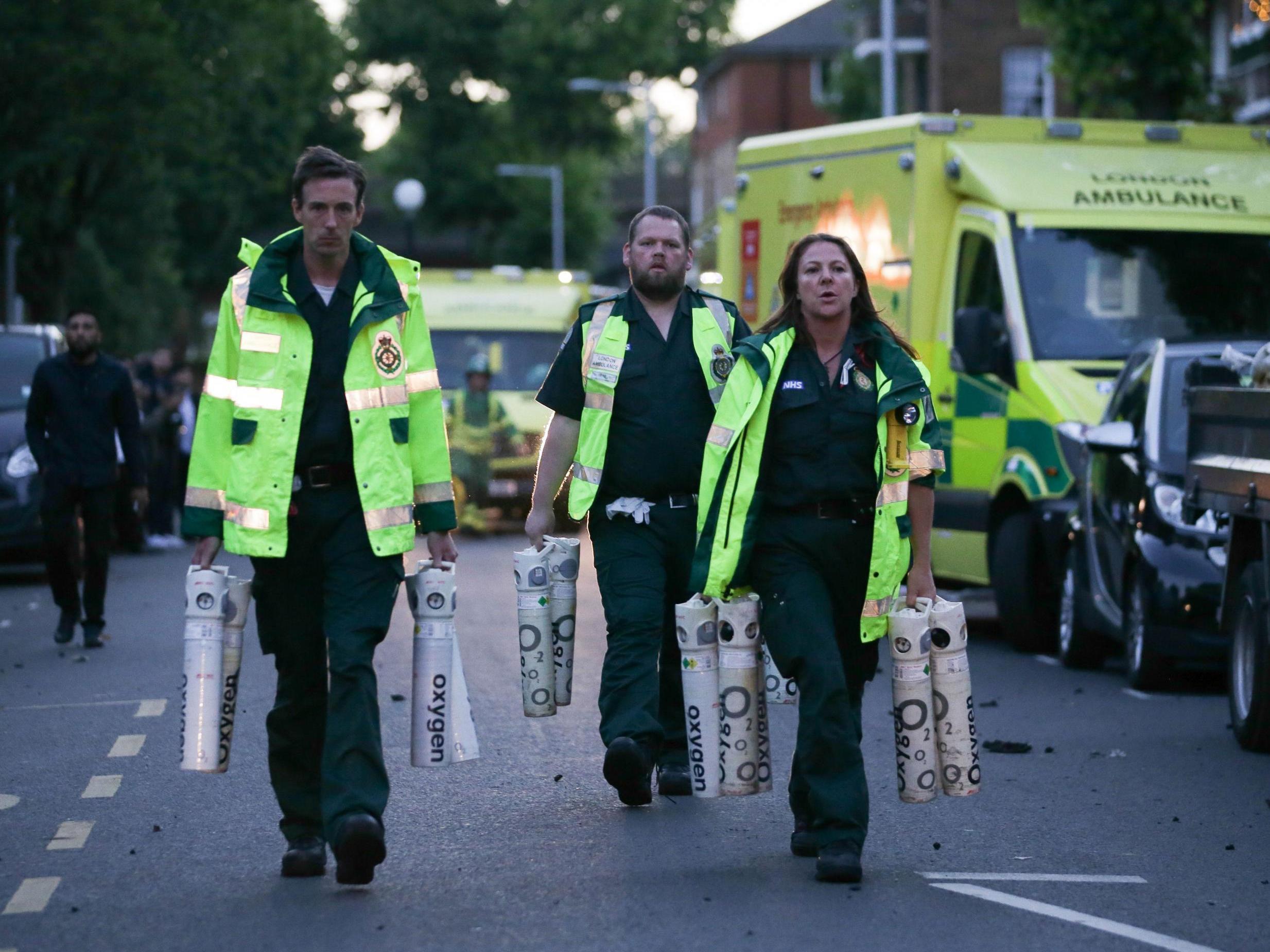Grenfell fire: Health officials ‘showed troubling lack of urgency’ over health risks from chemicals, say MPs
Environmental group says delays in health testing after ‘Grenfell cough’ contribute to sense authorities are complacent

MPs have attacked government health chiefs for displaying “a troubling lack of urgency” over chemical contamination around Grenfell Tower, despite residents reporting coughs, breathing difficulties and vomiting.
Calling for scheme to monitor residents for toxic elements to be urgently set up, the environmental group said delays in offering full health testing were contributing to a sense that authorities were complacent.
Since the fire disaster in June 2017, which killed 72 people, survivors have complained of symptoms including “the Grenfell cough”, coughing up blood and skin complaints. They are worried about the long-term effects on their own and their children’s health of the cocktail of pollutants released.
The Commons environmental audit committee in a report on Monday recommends that in future tests for contamination should be carried out in the immediate aftermath of all major disasters, with the results made public.
The document says: “We are troubled by the lack of urgency in response to the findings of environmental contamination around the Grenfell Tower site.
“We consider the results of sufficient concern to warrant immediate action, yet in correspondence Kensington and Chelsea council told us ‘until the [government’s] testing programme is complete we will not know if there is environmental contamination.’”
Referring to the “Grenfell cough” and similar health problems, the MPs say: “We share Public Health England’s desire not to cause the affected community any further distress; however we fear the delay in soil testing and offering full health testing is contributing to the sense that public authorities are complacent about the risks and patronising about the experience of local residents.”
Evidence of environmental contamination was first reported in February last year, with final results published just four months ago. The government announced it would carry out soil testing in October but that did not begin until last month.
Immediately after the fire, Public Health England – a government agency – began air-quality monitoring but there was no monitoring of soil or water run-off by the Environment Agency or Kensington and Chelsea Council, the report notes.
The MPs’ recommendations include the setting up of a health-monitoring programme for residents and firefighters.
They also said residents with concerns about dust or residues should be able to have their homes tested, and if contamination is found, the council should carry out a further deep-clean.
“Residents should be reassured that the presence of these chemicals is not harmful to their health and homes,” the report states.
However, scientists from the University of Central Lancashire's Centre for Fire and Hazards Science, led by Professor Anna Stec, who carried out testing for environmental contamination, found chemicals including benzene and hydrogen cyanide, the MPs say.
Prof Stec said some residents contacted her about a very strong, pungent smell, with some having difficulty breathing inside their homes despite thorough cleaning.
Her study concluded that the fire “released both acute and chronic toxicants in the fire effluent which may have potential long-term adverse health effects on emergency responders, clean-up workers and local residents”.
When questioned about debris in homes, Professor Tim Gant of Public Health England told the committee: “My understanding is that the local council offered to remove all that debris and the residents had the opportunity to get rid of that debris, so it should not still be there.”
“In the immediate aftermath of a fire, acute toxicity from fire effluents is the leading cause of death and injury,” according to the document.
“In the Grenfell Tower fire, toxic effluent from the fire was spread via the smoke plume and particulate deposits.”
There have been reports that several residents were treated for cyanide poisoning after the fire, it adds.
Agnieszka Murray, one resident, said: “I am concerned now that over a period of time we were exposed to quite a large amount of toxins being around, where we must have inhaled, touched, went into our eyes, and we may have eaten them.”
Kensington and Chelsea council told the MPs it completed a deep clean of 300 properties. It changed soil where requested but has not undertaken a widespread replacement of soil or deep clean of ventilation systems.
The committee’s findings were contained in a report on chemicals that reveals the UK has one of the highest concentrations of flame retardants in breast milk and that babies are born “pre-polluted”.
“The Government thanks the Environmental Audit Committee for their report into toxic chemicals in everyday life and will respond in due course", a spokesperson from the Department for Business, Energy and Industrial Strategy said in a statement.
"“We are committed to publishing our response to the review of furniture fire safety regulations before recess to ensure the highest levels of safety are both maintained and improved."
Join our commenting forum
Join thought-provoking conversations, follow other Independent readers and see their replies
Comments